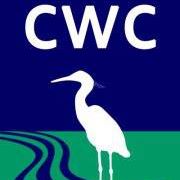The majority of this list of publications were obtained from the Deepwater Horizon Bibliography page on NOAA’s website. Please visit it to find many more interesting science publications associated with the BP oil spill.
Beazley M.J., R.J. Martinez, S. Rajan, J. Powell, Y.M. Piceno, L.M. Tom, G.L. Andersen, T.C. Hazen, J.D. Van Nostrand, and J. Zhou. 2012. Microbial community analysis of a coastal salt marsh affected by the Deepwater Horizon oil spill. PLoS ONE 7(7): e41305.
Carmichael C.A., J.S. Arey, W.M. Graham, L.J. Linn, K.L. Lemkau, R.K. Nelson, and C.M. Reddy. 2012. Floating oil-covered debris from Deepwater Horizon: Identification and application. Environ. Res. Lett. 7(1): 1-6.
Chakraborty R., S.E. Borglin, E.A. Dubinsky, G.L. Andersen, and T.C. Hazen. 2012. Microbial response to the MC-252 oil and Corexit 9500 in the Gulf of Mexico. Frontiers Microbiotech., Ecotoxic. and Bioremed. 3:357.
Chanton J.P., J. Cherrier, R.M. Wilson, J. Sarkodee-Adoo, S. Bosman, A. Mickle, and W.M. Graham. 2012. Radiocarbon evidence that carbon from the Deepwater Horizon spill entered the planktonic food web of the Gulf of Mexico. Environmental Res. Lett. 7(4): 1-4.
Chase, D.A., D.S. Edwards, G. Qin, M.R. Wages, M.M. Willming, T.A., Anderson, J.D., Maul. 2012. Bioaccumulation of petroleum hydrocarbons in fiddler crabs (Uca minax) exposed to weathered MC-252 crude oil alone and in mixture with an oil dispersant. Science Total Environ. 444(2013): 121–127.
Chen, J. and M.S. Denison. 2011. The Deepwater Horizon oil spill: Environmental fate of the oil and the toxicological effects on marine organisms. J. Young Investigators 21(6): 84-95.
Falcini F., D.J. Jerolmack, B.B. Nardelli. 2012. Mississippi River and sea surface height effects on oil slick migration. PLoS ONE 7(4): e36037.
Fodrie, F.J. and K.L. Heck Jr. 2011. Response of coastal fishes to the Gulf of Mexico oil disaster. PLoS ONE 6(7): e2160.
Hamdan, L.J. and P.A. Fulmer. 2011. Effects of COREXIT® EC9500A on bacteria from a beach oiled by the Deepwater Horizon spill. Aquat. Microb. Ecol. 63: 101-109.
Horel, A., B. Mortazavi, and P.A. Sobecky. 2012. Seasonal monitoring of hydrocarbon degraders in Alabama marine ecosystems following the Deepwater Horizon oil spill. Water Air Soil Pollut. 223: 3145-3154.
Kim J.N., B.S. Kim, S.J. Kim, and C.E. Cerniglia. 2012. Effects of crude oil, dispersant, and oil-dispersant mixtures on human fecal microbiota in an in vitro culture system. Amer. Society Microbiol. 3(5): 1-10.
Kujawinski, E.B., M.C. Kido-Soule, D.L. Valentine, A.K. Boysen, K. Longnecker, and M.C. Redmond. 2011. Fate of dispersants associated with the Deepwater Horizon oil spill. Environ. Science & Tech. 45(4): 1298–1306.
McCrea-Strub, A., K. Kleisner, U.R. Sumaila, W. Swartz, R. Watson, D. Zeller, D. Pauly. 2011. Potential impact of the Deepwater Horizon oil spill on commercial fisheries in the Gulf of Mexico. Fisheries 36(7): 332-336.
Mitra S., D.G. Kimmel, J. Snyder, K. Scalise, B.D. McGlaughon, M.R. Roman, G.L. Jahn, J.J. Pierson, S.B. Brandt, J.P. Montoya, R.J. Rosenbauer, T.D. Lorenson, F.L. Wong, and P.L. Campbell. 2012. Macondo-1 well oil-derived polycyclic aromatic hydrocarbons in mesozooplankton from the northern Gulf of Mexico. Geophysical Res. Lett. 39: L01605.
Paris C.B., M. Le Henaff, Z.M. Aman, A. Subramaniam, J. Helgers, D.P. Wang, V.H. Kourafalou, and A. Srinivasan. 2012. Evolution of the Macondo well blowout: Simulating the effects of the circulation and synthetic dispersants on the subsea oil transport. Environ. Science & Tech. 46(24): 13293–13302.
Passow, U., K. Ziervogel, V. Asper, A. Diercks. 2012. Marine snow formation in the aftermath of the Deepwater Horizon oil spill in the Gulf of Mexico. Environ. Res. Lett. 7: 035301.
Perring, A.E., J.P. Schwarz, J.R. Spackman, R. Bahreini, J.A. de Gouw, R.S. Gao, J.S. Holloway, D.A. Lack, J.M. Langridge, J. Peischl, A.M. Middlebrook, T.B. Ryerson, C. Warneke, L.A. Watts, and D.W. Fahey. 2011. Characteristics of black carbon aerosol from a surface oil burn during the Deepwater Horizon oil spill. Geophysical Res. Lett. 38: L17809.
Rabalais, N.N. 2011. Twelfth Annual Roger Revelle Commemorative Lecture: Troubled waters of the Gulf of Mexico. Oceanography 24(2): 200-211.
Redmond, M.C. and D.L. Valentine. 2012. Natural gas and temperature structured a microbial community response to the Deepwater Horizon oil spill. Proceedings of the National Academy of Sciences 109(50): 20292-20297.
Rico-Martinez, R., T.W. Snell, and T.L. Shearer. 2012. Synergistic toxicity of Macondo crude oil and dispersant Corexit 9500A® to the Brachionus plicatilis species complex (Rotifera). Environ. Pollut. 173: 5-10.
Shiller, A.M. and D.J. Joung. 2012. Nutrient depletion as a proxy for microbial growth in Deepwater Horizon subsurface oil/gas plumes. Environ. Res. Lett. 7: 045301.
Spier C., W.T. Stringfellow, T.C. Hazen, and M. Conrad. 2012. Distribution of hydrocarbons released during the 2010 MC252 oil spill in deep offshore waters. Environ. Pollut. 173: 224-230.
Urakawa, H., J.C. Garcia, P.D. Barreto, G.A. Molina, and J.C. Barreto. 2012. A sensitive crude oil bioassay indicates that oil spills potentially induce a change of major nitrifying prokaryotes from the Archaea to the Bacteria. Environ. Pollut. 164: 42-45.
Zuijdgeest, A. and M. Huettel. 2012. Dispersants as used in response to the MC252-SpilllLead to higher mobility of polycyclic aromatic hydrocarbons in oil-contaminated Gulf of Mexico sand. PLoS ONE 7(11): 1-13.

